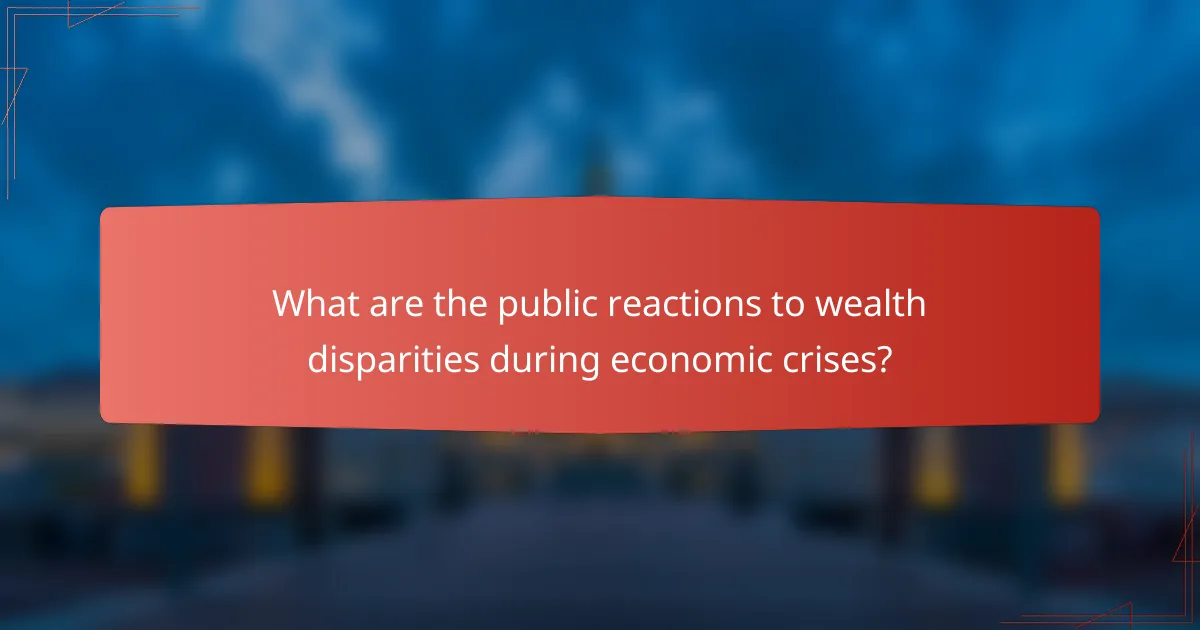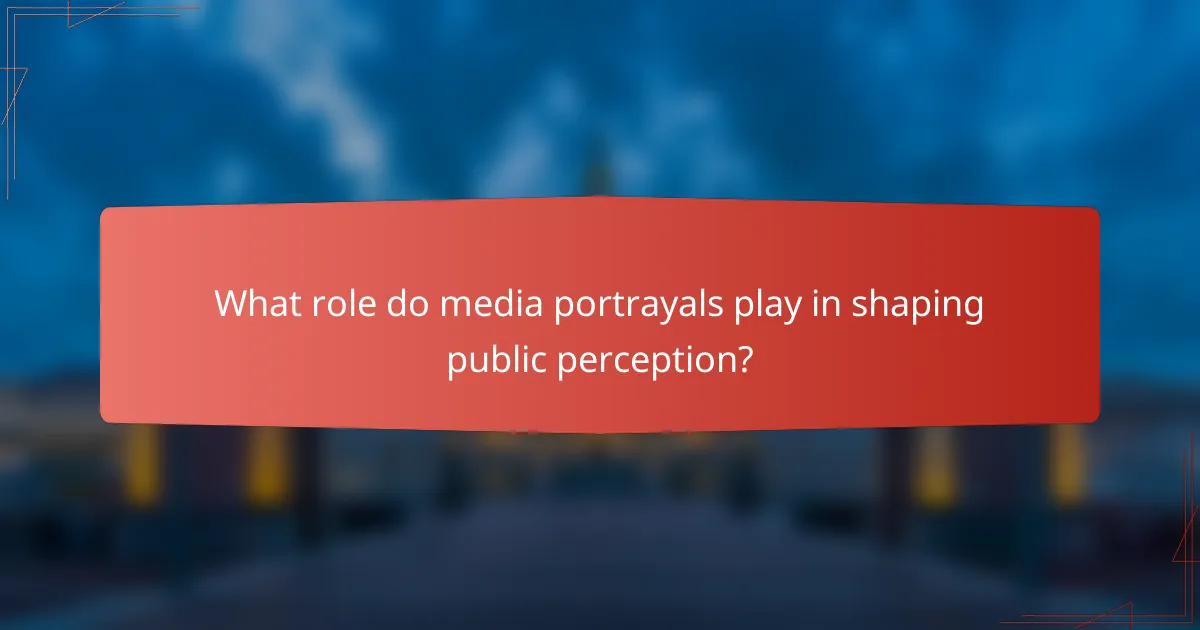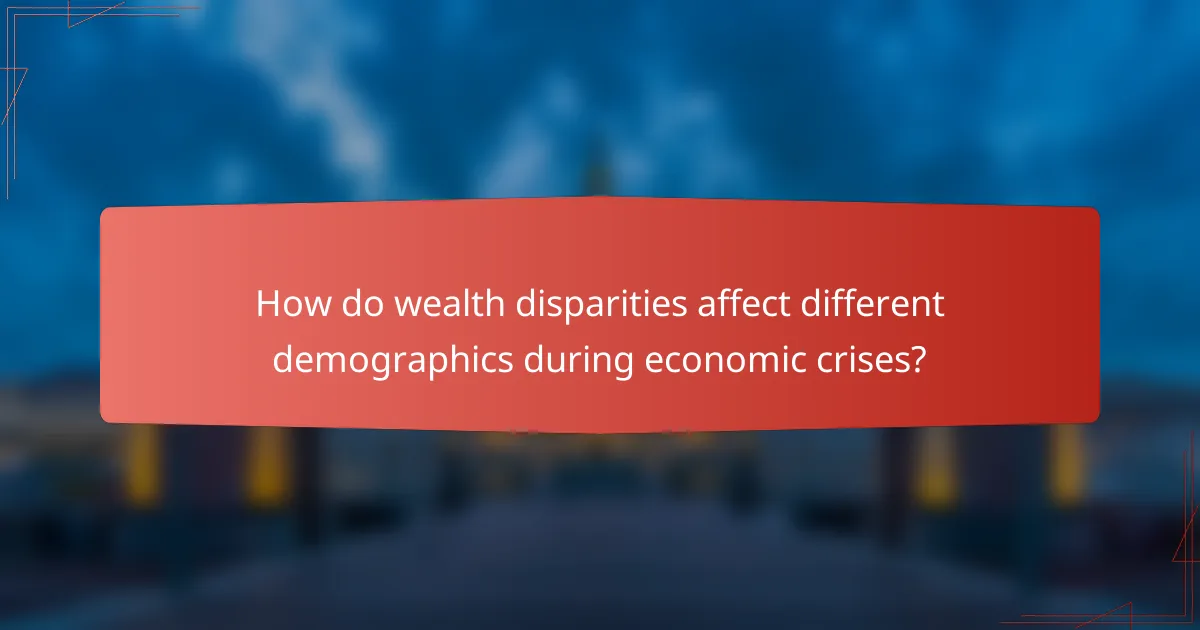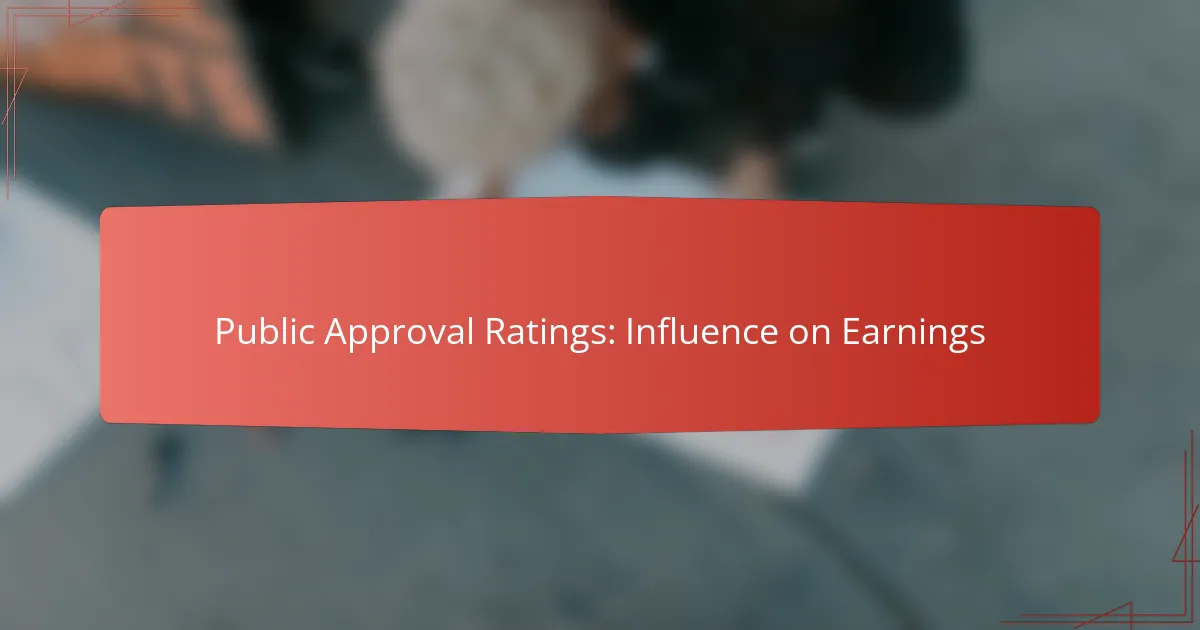The stark wealth disparities that emerge during economic crises in the US reveal significant challenges such as rising unemployment and food insecurity, particularly affecting low-income households. Public reactions often include protests and calls for policy reforms, reflecting widespread frustration over economic inequality. In response, governments typically implement targeted financial support to assist vulnerable populations and foster a more equitable recovery.

How do wealth disparities manifest during economic crises in the US?
Wealth disparities during economic crises in the US become evident through increased unemployment, housing instability, and food insecurity. These factors disproportionately affect low-income households, exacerbating existing inequalities and limiting access to essential resources.
Increased unemployment rates
During economic downturns, unemployment rates typically rise, hitting lower-income workers the hardest. Job losses often occur in sectors like retail and hospitality, where wages are already low, leading to a significant drop in household income.
For example, during the COVID-19 pandemic, millions of workers in these industries faced layoffs, resulting in unemployment rates soaring to levels not seen in decades. This spike in unemployment further widens the gap between the wealthy and the poor, as higher-income individuals are more likely to retain jobs or work remotely.
Housing instability
Housing instability often increases during economic crises, as many families struggle to pay rent or mortgage payments. This situation can lead to a rise in evictions and foreclosures, disproportionately affecting low-income households who lack financial buffers.
In the US, programs like the CDC’s eviction moratorium provided temporary relief during the pandemic, but once these measures ended, many families faced the risk of losing their homes. The lack of affordable housing options further complicates this issue, making it difficult for affected individuals to find stable living situations.
Food insecurity
Food insecurity tends to rise during economic crises, as job losses and reduced incomes limit access to adequate nutrition. Many families rely on food banks and assistance programs, which often struggle to meet increased demand during tough economic times.
In the US, organizations like Feeding America report significant spikes in food insecurity rates during economic downturns. Households with children are particularly vulnerable, as they may face challenges in accessing healthy meals, leading to long-term health consequences.

What are the public reactions to wealth disparities during economic crises?
Public reactions to wealth disparities during economic crises often manifest through protests, demands for policy changes, and community support initiatives. These responses highlight the growing frustration and urgency among citizens regarding economic inequality and its impact on society.
Protests and social movements
Protests and social movements frequently arise as a direct response to perceived injustices related to wealth disparities. Activists organize demonstrations to raise awareness and demand accountability from governments and corporations, often using slogans and symbols that resonate with the public’s frustrations.
For example, movements like Occupy Wall Street highlighted the divide between the wealthy and the working class, galvanizing support across various demographics. These protests can lead to increased media coverage, which amplifies the message and encourages broader participation.
Calls for policy reform
Economic crises often trigger calls for policy reform aimed at addressing wealth disparities. Citizens advocate for changes such as higher taxes on the wealthy, increased minimum wages, and enhanced social safety nets to support those most affected by economic downturns.
In many cases, these calls are backed by research and data demonstrating the benefits of equitable policies. For instance, proposals for universal basic income have gained traction as a means to provide financial stability during uncertain times.
Community support initiatives
In response to wealth disparities, communities often develop support initiatives to assist those in need. These initiatives can include food banks, job training programs, and financial literacy workshops designed to empower individuals and families facing economic hardship.
Local organizations frequently collaborate with businesses and government entities to create sustainable solutions. For example, community-led fundraising efforts can help provide immediate relief to families struggling with unemployment or rising living costs during economic crises.

How do government responses address wealth disparities in economic crises?
Government responses to wealth disparities during economic crises typically involve targeted financial support aimed at vulnerable populations. These measures are designed to mitigate the impact of economic downturns and promote equitable recovery.
Stimulus packages
Stimulus packages are financial aid programs initiated by governments to boost economic activity during crises. They often include direct payments to individuals, support for businesses, and funding for public projects. For example, during the COVID-19 pandemic, many countries issued one-time payments to citizens to help cover essential expenses.
These packages can vary significantly in size and scope, with some nations allocating hundreds of billions of dollars. The effectiveness of stimulus packages depends on timely implementation and the extent to which they reach those in need.
Unemployment benefits expansion
Expanding unemployment benefits is a critical response to rising joblessness during economic downturns. This measure typically involves increasing the amount and duration of benefits available to unemployed individuals. For instance, in the U.S., the CARES Act temporarily boosted unemployment payments by an additional $600 per week for a limited time.
Such expansions help alleviate financial strain on households, allowing them to maintain spending levels and contribute to economic stability. However, there is a balance to strike, as overly generous benefits can discourage job-seeking behavior.
Tax relief measures
Tax relief measures aim to reduce the financial burden on individuals and businesses during economic crises. These can include temporary tax cuts, deferrals, or credits designed to increase disposable income. For example, some governments may allow delayed tax payments or provide credits for low-income earners to help them navigate tough financial times.
While tax relief can provide immediate relief, it may also lead to longer-term fiscal challenges for governments. Policymakers must carefully consider the trade-offs between short-term benefits and potential impacts on public services and infrastructure funding.

What role do media portrayals play in shaping public perception?
Media portrayals significantly influence public perception of wealth disparities during economic crises by framing narratives that highlight inequality and hardship. These representations can shape attitudes, inform discussions, and even drive policy changes based on how issues are presented to the public.
Highlighting inequality
Media outlets often emphasize the stark contrasts between the wealthy and the economically disadvantaged, particularly during crises. This highlighting of inequality can manifest through stories of individuals facing financial hardship juxtaposed with images of affluence. Such portrayals can evoke empathy and spur public outrage, prompting discussions about systemic issues.
For instance, news coverage might focus on the struggles of low-income families while contrasting them with reports on corporate profits, illustrating the widening wealth gap. This approach can lead to increased awareness and calls for action among the public.
Framing narratives of hardship
Media narratives frequently frame economic crises as periods of widespread hardship, affecting various demographics differently. By focusing on personal stories of struggle, such as job loss or housing insecurity, the media can create a sense of urgency around the need for solutions. This framing can resonate deeply with audiences, fostering a collective understanding of the challenges faced by many.
Moreover, the portrayal of hardship can influence public sentiment, leading to greater support for social programs aimed at alleviating poverty. For example, during economic downturns, stories highlighting the plight of the unemployed may increase public backing for unemployment benefits or job training initiatives.
Influencing policy discussions
Media portrayals can significantly impact policy discussions by shaping the narrative around economic disparities. When the media highlights specific issues, such as income inequality or access to healthcare, it can push these topics onto the political agenda, prompting lawmakers to respond. This influence is particularly evident during election cycles when candidates often address issues raised in the media.
Additionally, public reactions to media portrayals can lead to grassroots movements advocating for policy changes. For example, widespread media coverage of wealth inequality may galvanize community organizations to lobby for higher minimum wages or improved social safety nets, reflecting the public’s growing concern over economic disparities.

How do wealth disparities affect different demographics during economic crises?
Wealth disparities significantly impact various demographics during economic crises, often exacerbating existing inequalities. Those with fewer resources face greater challenges in accessing essential services, which can lead to long-term disadvantages.
Impact on marginalized communities
Marginalized communities typically experience the most severe effects during economic downturns. Limited access to financial resources means they often lack the safety nets that wealthier individuals can rely on, such as savings or investments. This can lead to higher rates of unemployment and poverty within these groups.
Additionally, systemic barriers, such as discrimination in hiring practices or housing, can further entrench these disparities. As a result, marginalized communities may find it more difficult to recover when the economy improves, perpetuating a cycle of disadvantage.
Effects on children and education
Children from low-income families are disproportionately affected during economic crises, as financial strain can lead to reduced educational opportunities. Schools in economically disadvantaged areas often face budget cuts, resulting in larger class sizes and fewer resources for students.
Moreover, children may experience instability at home, such as food insecurity or housing instability, which can hinder their academic performance. This lack of support can have lasting effects on their educational attainment and future job prospects.
Variances in healthcare access
Wealth disparities during economic crises create significant variances in healthcare access. Individuals with lower incomes often lack health insurance or the means to afford necessary medical care, leading to worse health outcomes. In contrast, wealthier individuals can typically access quality healthcare without financial strain.
During crises, public health systems may become overwhelmed, further disadvantaging those in lower-income brackets. This can result in delayed treatments and increased health risks, highlighting the urgent need for equitable healthcare solutions.



